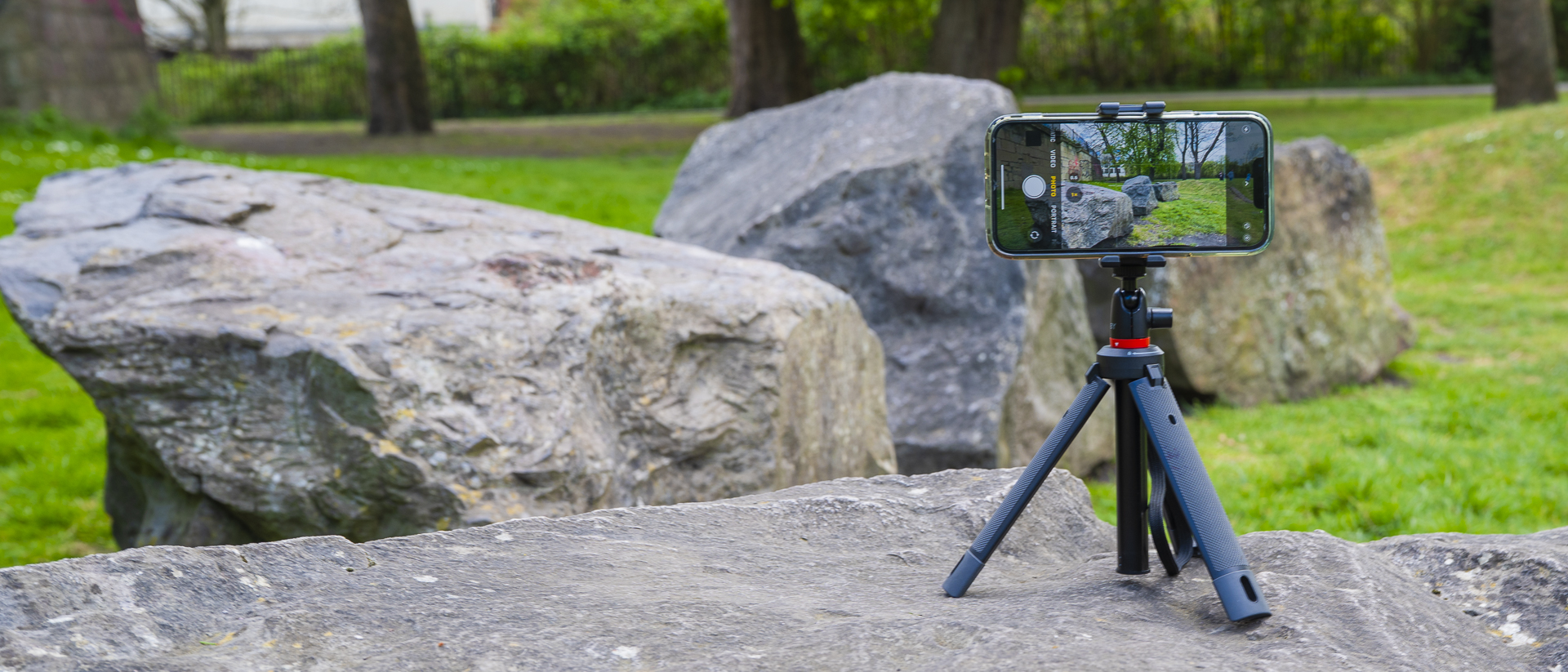The best camera backpacks: carry all your cameras, lenses, and accessories
The best camera backpacks have plenty of room to carry your camera gear and keep it organized and secure

Before you read this buying guide it’s worth considering whether you need a camera backpack, a messenger bag, or a sling bag - which is a smaller version of a traditional camera shoulder bag, a shoulder bag tends to be less capacious than a backpack, so there’s less room for non-photographic peripherals.
Many backpacks can accommodate a mix of clothing, laptops, and camera gear as well as extra photographic accessories such as a drone. The camera backpacks in this guide range from a storage capacity of 7 to 35 liters, so there should be something to suit your specific photographic transport needs.
There will be a wide range of photographers reading this camera backpack guide. You may be a landscape photographer who needs to carry a collection of camera bodies, lenses, and accessories into the wilds while simultaneously keeping their precious kit protected from the elements.
You may be a travel photographer who needs to travel light but also requires a backpack that they can fit a few clothes into while on a trip abroad. Travel bags may also need to comply with the strict luggage size requirements of various airlines.
Whatever your needs as a photographer this buying guide should feature a backpack to suit you.
The Quick List
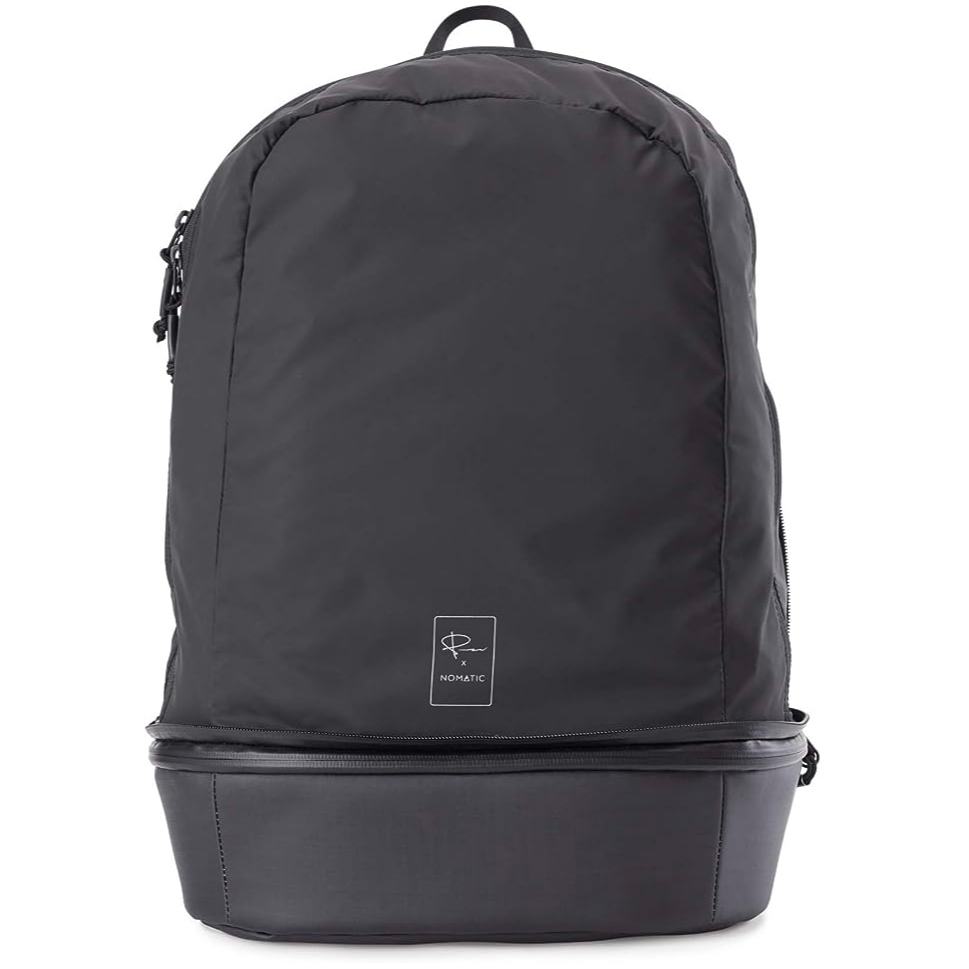
The McKinnon Cube Pack can be used to store and organize your camera gear inside a larger McKinnon backpack or act as a backpack in its own right if you need to travel fast and light. Read more below...
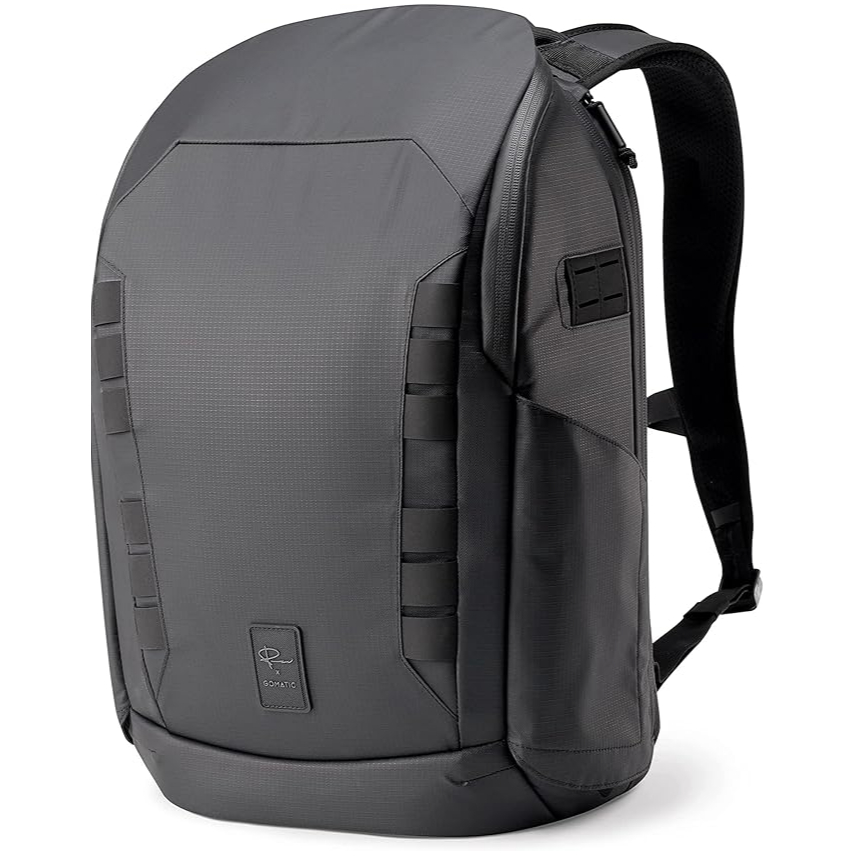
A sturdy and capacious backpack that can be adapted for use as an all-purpose backpack or for various photographic scenarios. Read more below...

This sturdily constructed and water-resistant backpack is perfect for travel/landscape photographers who need to go ‘off-road’ while keeping their kit safe. Read more below...
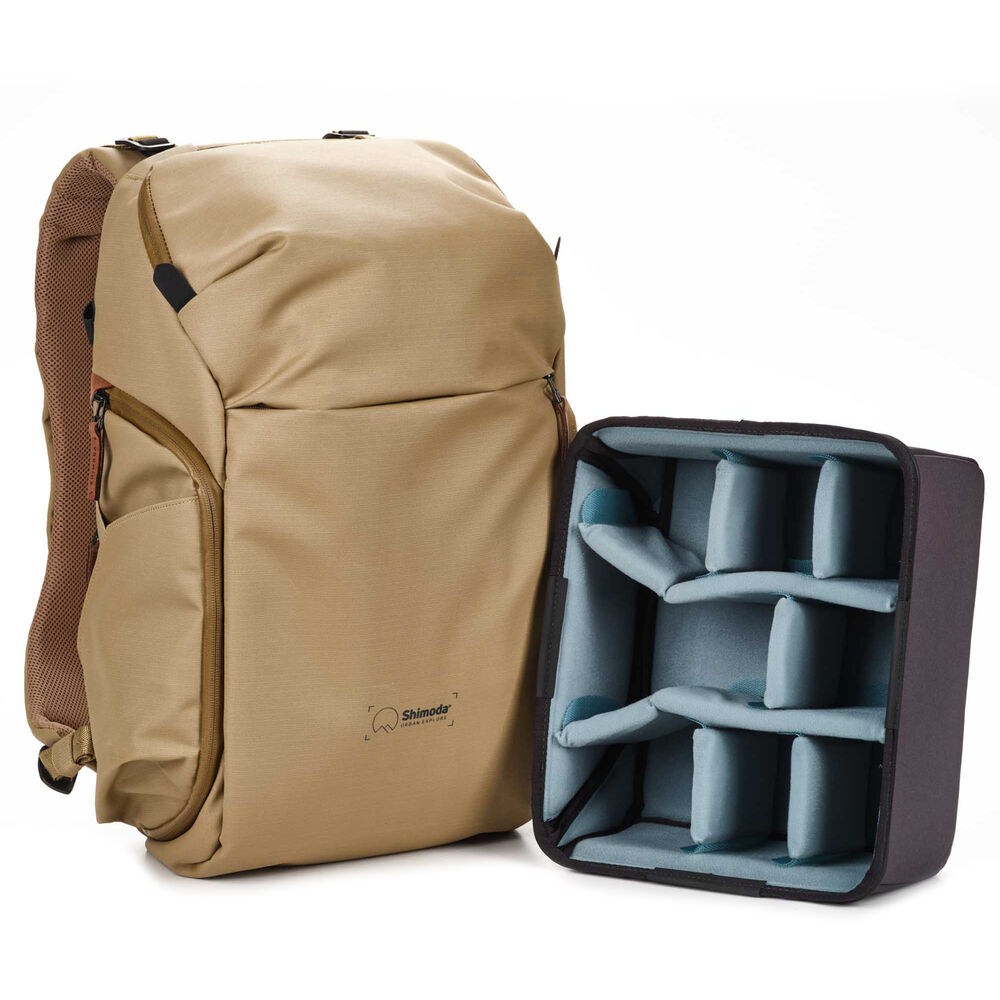
The Shimoda Urban Explore 25 will suit traveling photographers who need to carry additional gear such as laptops (and clothing) in style and comfort. Read more below...
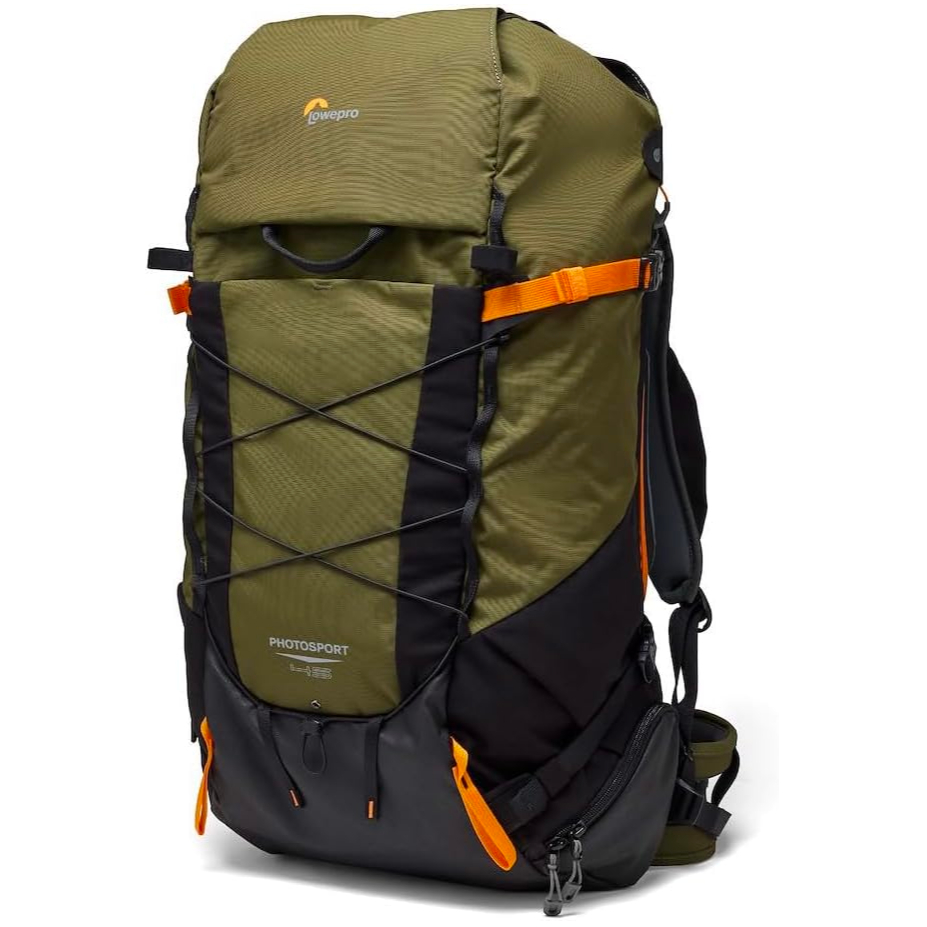
The PhotoSport X’s recycled material supports sustainability. It is comfortable to carry and will keep your kit safe and dry on outdoor adventures. Read more below...
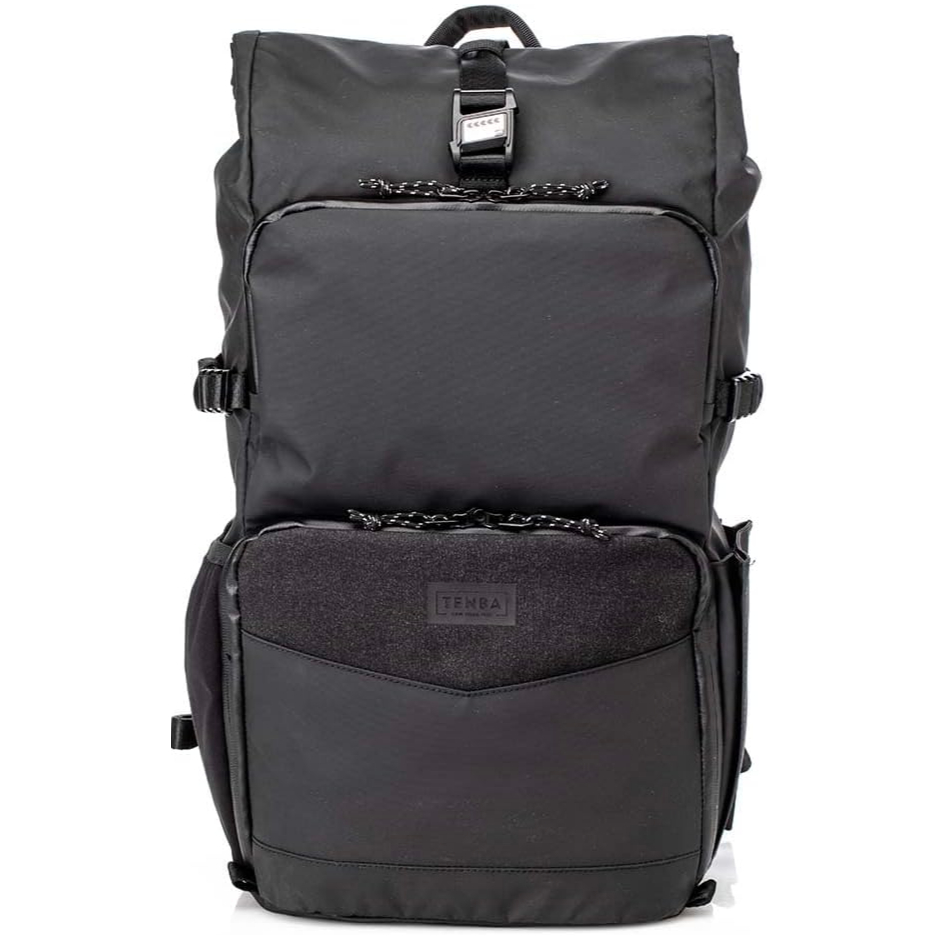
The Tenba DNA 16 DSLR Backpack does a great job of providing your kit with plenty of storage space and protection from extreme weather (as well as being comfortable to carry on a shoot). Read more below...
The best camera backpacks
Why you can trust Digital Camera World
Best camera backpack overall

Specifications
Reasons to buy
Reasons to avoid
✅Versatile Design: Functions as both a compact camera cube and a 21L backpack, offering flexibility for different types of trips and gear needs.
✅Water-Resistant: Keeps your gear dry in wet conditions, offering peace of mind during outdoor shoots or unexpected weather.
❌Limited Capacity: While versatile, the 7L camera cube might be too small for larger DSLR setups or additional lenses and gear.
❌Dependent on Larger Backpack: Although it works independently, it’s designed to fit inside the larger McKinnon Camera Backpack 25L, which could feel redundant if you’re looking for a single solution.
The Gomatic (or Nomatic in the States) McKinnon Cube Pack 21L is both a camera cube and a backpack. In its camera cube form, the Cube Pack is a small rugged box (7L) that contains space for a small DSLR or compact camera, a lens, and a range of accessories such as chargers. The contents of the cube can be separated by dividers that you can re-arrange using a ‘hook and loop’ velcro system.
The cube is designed to fit inside the larger McKinnon Camera Backpack 25L (see our next review), but this is not necessary, if you want to travel light then you can transform the cube into a 21L backpack by simply unzipping a compartment. Think of the larger 25L McKinnon backpack as the mother ship and the Cube Pack as a shuttle that you can use to transport your kit on shorter trips.
When deployed in its backpack form you can use the McKinnon Cube Pack to transport camera gear and a collection of clothes in the space on the floor by your feet when flying (which saves you the cost of paying extra for overhead luggage space.) On a three-day trip to Poland, the Cube Pack was all we needed to carry kit and clothing (and we welcomed the concealed zippable passport pocket inside the backpack section of the Cube Pack.) It is also water resistant so our kit stayed dry when it rained on our shoot.
Read more: Nomatic McKinnon Cube Pack (21L) review
Best backpack for general use
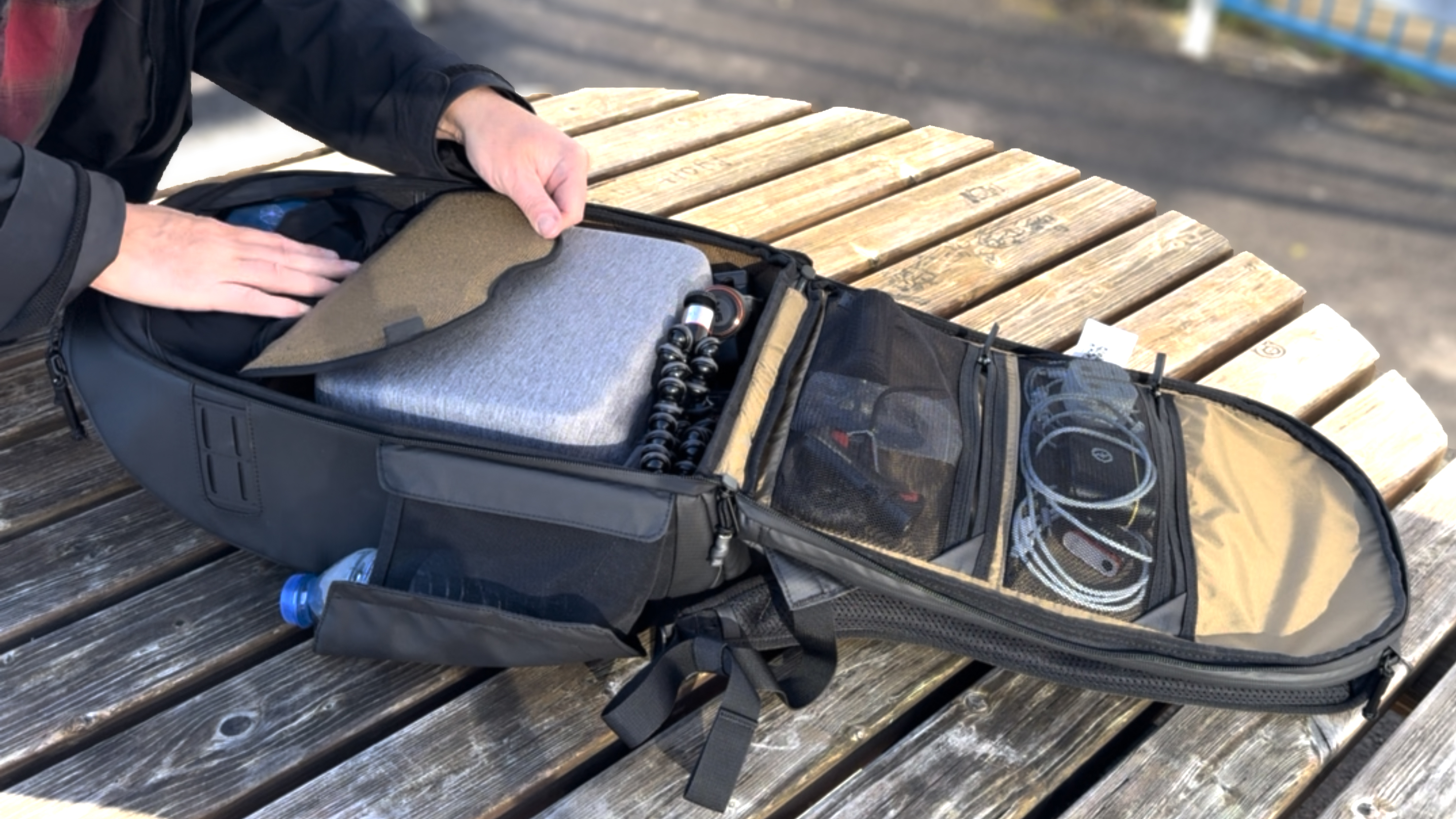
Specifications
Reasons to buy
Reasons to avoid
✅Modular Design: Compatible with various camera cubes that can be tailored with velcro dividers for different shooting scenarios, making it highly adaptable for photographers.
✅Tech-Friendly: Includes dedicated space for an iPad and keyboard, making it a great option for photographers and content creators who need to work on the go.
❌Additional Costs: To fully utilize the bag’s potential, you may need to invest in extra modular accessories like camera cubes, which can increase the overall cost.
❌Requires Setup Time: Adjusting the ladder system and configuring the cubes can take time, which might be inconvenient if you need to quickly access or change your gear setup.
This spacious 25L backpack has a ‘ladder’ system that enables you to adjust the size of its internal compartments so that there’s more space for camera gear and less room for other items such as clothes (or vice versa). The ladder is simply a hinged divider that you can reposition with ease.
However, to make this backpack suit your photographic storage needs you may need to spend more money on modular accessories such as a range of camera cubes that are available in different sizes. You can set up the interior of these cubes (using adjustable ‘hook and loop’ velcro dividers) to suit various shooting scenarios and then pop the appropriate cube into the 25L backpack.
If you need to use the McKinnon as a non-photographic backpack then you can remove the cubes to make more space. You can also pop the McKinnon Cube Pack (see review above) into the 25 L backpack.
I tested the McKinnon 25 L backpack by transporting my mobile photography gear to shoot an orchestra. I didn’t use any camera cubes as I needed to fit a chunky SmallRig All-In-One Kit for Smartphones carry case inside the backpack. I also carried a wide range of smaller accessories such as a Hollyland Lark M1 microphone kit that I used to interview the conductor and various musicians.
The smaller accessories such as cables and chargers fit nicely into the backpack interior’s zipped compartments. These pockets were made of mesh so I could easily spot and access the appropriate accessories stored inside them. I also enjoyed storing my iPad and its keyboard in a zipped storage section so I could write up my review on the train journey back from the shoot.
Read more: Gomatic McKinnon Camera Backpack (25L) review
Best backpack for DSLR cameras
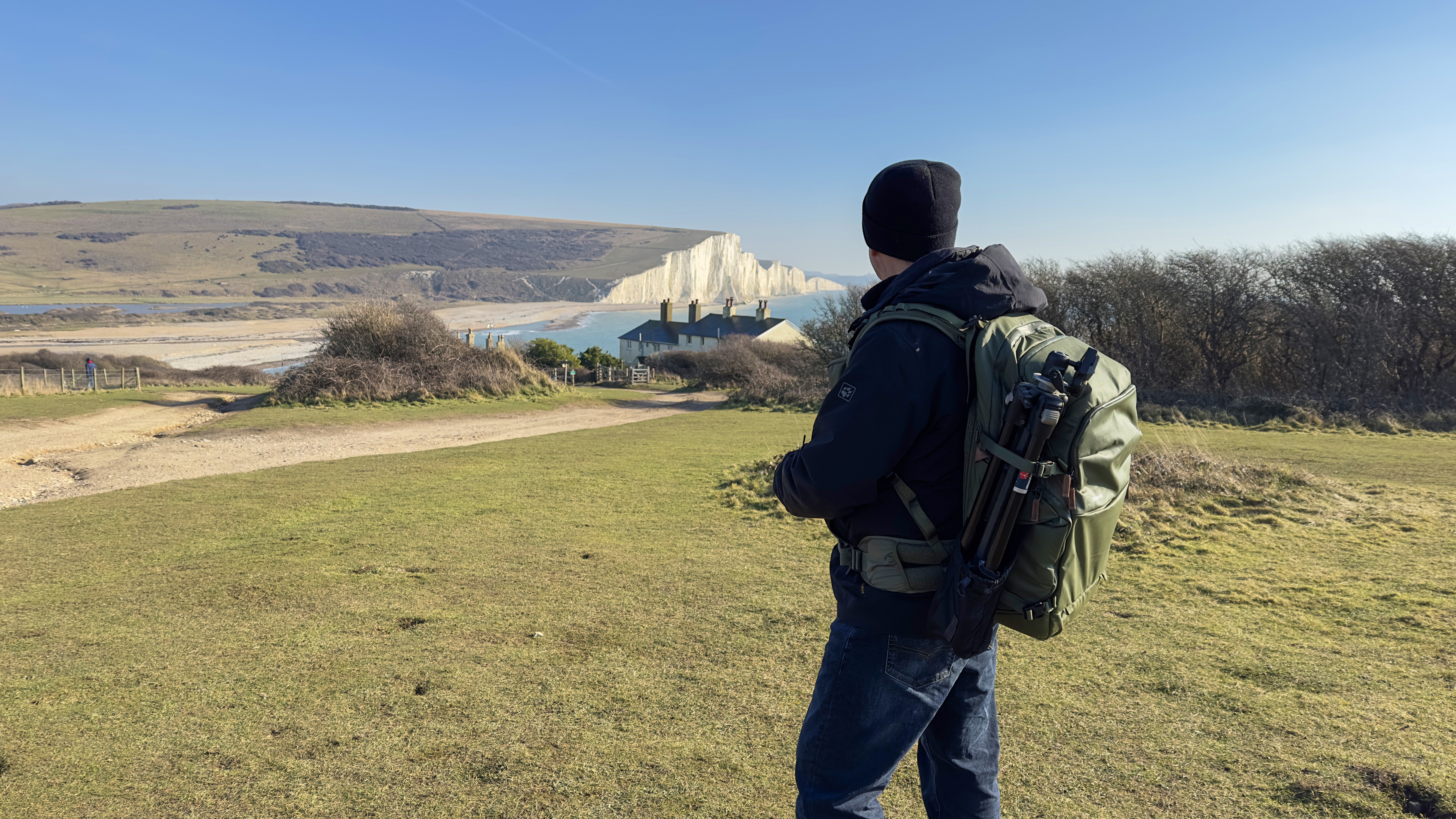
Specifications
Reasons to buy
Reasons to avoid
✅Comfortable for Heavy Loads: Despite carrying up to 12 kilos of gear, the padded shoulder and waist straps make it surprisingly comfortable, even on hilly terrain.
✅Female-Friendly Options: Offers customizable women’s shoulder straps in three sizes at no extra cost, making it inclusive and comfortable for female photographers.
❌Not Fully Waterproof: Although water-resistant, it may not offer complete protection in extreme weather, necessitating additional waterproof covers or bags.
❌Heavy When Fully Loaded: Can become quite heavy (up to 12 kilos) when filled with gear, which may be cumbersome during extended travel or long hikes.
As the name suggests the Explore V2 backpack range is designed to suit the needs of the travel/adventure photographer and it does this with aplomb! You’ll enjoy populating the various compartments and pockets of this backpack with a range of DSLR accessories. You can then access various items quickly and easily using one of the multiple entry points into the bag. As with the McKinnon 35L (reviewed above), you need to buy additional internal storage packs - or Core module units - to help keep your camera gear organized.
When testing the Shimoda we used a medium Core unit which left us extra space to store kit (or clothing) outside of the Core. The larger Core unit fills more of the backpack’s interior, leaving less space for clothing. There’s also a padded storage space for a 15-inch laptop in case you need to do any photo processing while away on a shoot.
Once we filled the Shimoda with a wide range of DSLR kit it weighed in at a heavy 12 Kilos, but the backpack’s sturdy and padded shoulder straps and the supporting waist strap made it surprisingly comfortable to carry - even on hilly terrain.
Female photographers can choose to ship the Shimoda with women’s shoulder straps at no extra cost, and these come in three sizes. Check out my colleague Hannah Rooke’s full review for a female perspective on the Shimoda Explore 35L.
The Explore V2 is made of water-resistant nylon which is essential if you’re heading into the wet wilds to capture some stunning landscape shots. Most of the external zips are protected by a seal that stops water entering the backpack when the zips are shut. A nice touch is a whistle that’s built into the chest strap so you can signal for assistance if you get into trouble and there’s no phone signal!
Read more: Shimoda Explore V2 35L review
Best backpack for style
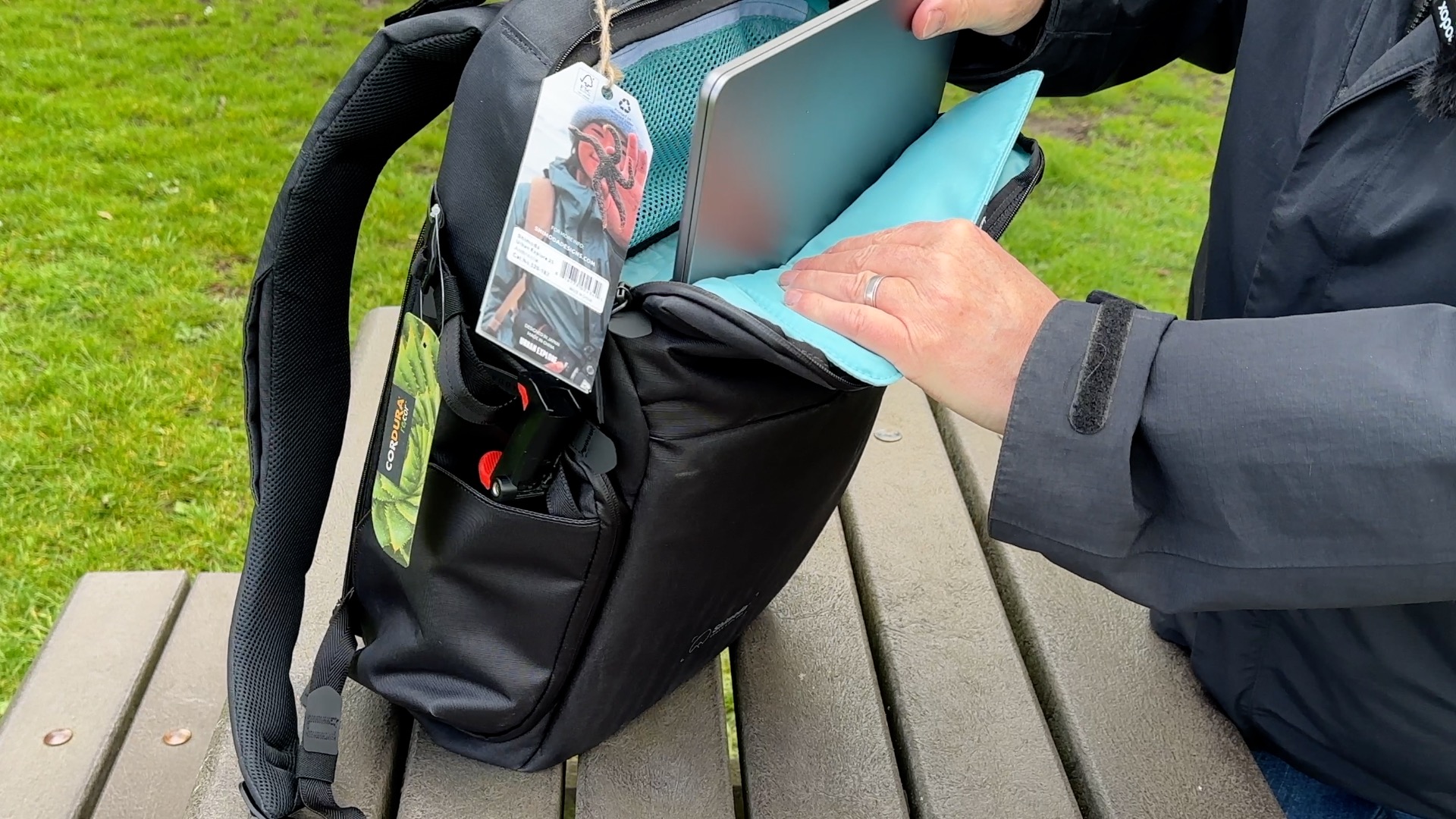
Specifications
Reasons to buy
Reasons to avoid
✅Versatile Size Options: Available in 20L, 25L, and 30L sizes, catering to different needs and preferences; the 25L model balances capacity and portability well.
✅Dual-Use Functionality: Can easily transition from a camera bag to an everyday backpack by removing the core unit, providing flexibility for different uses.
❌Moderate Gear Capacity: At 25L, it may not be sufficient for those needing to carry extensive gear or larger items, especially in professional settings.
❌Limited Outdoor Adventure Features: Compared to more rugged models like the Explore V2, it lacks features tailored to serious outdoor or adventure photography.
We feature another Shimoda backpack in this buying guide - the Shimoda Explore V2 - but the Urban Explore is a new range from Shimoda. Backpacks in the Urban Explore range are available in three sizes - 20L, 25L, and 30L and we took the midrange version for a test shoot. At 25 L the Urban Explore wasn’t too heavy to carry on a long walk (I clocked up 13,000 steps on that shoot) but it was capacious enough to transport a wide range of equipment.
Unlike the Shimoda Explore V2 range, the Urban Explore backpacks ship with an insertable core unit that you can configure using ‘hook and loop’ pads. This enables you to customize the interior of the backpack to suit very specific kit storage requirements. If you do want to use the Shimoda Urban Explore as an everyday bag simply remove the core unit and fill the 25L space with whatever you like. It also boasts two side pockets that you can use to store a tripod and a water bottle for example.
There are some welcome little design touches to the Urban Explore such as a built-in keyring clip, hidden SmartTag and Passport compartments, and a laptop sleeve that can carry laptops up to 16” in size. There’s also a pass-through strap which makes it easier to pop the backpack on your wheeled luggage when navigating through an airport (plus the backpack meets international carry-on size requirements for flights). And although it's not designed for the extreme weather thrown at you by the ‘great outdoors’ the Urban Explore is water-resistant enough to keep your kit dry during city drizzle.
Read our full Shimoda Urban Explore 25 review for more
Best for outdoor sports photographers

Specifications
Reasons to buy
Reasons to avoid
✅Durability Features: The carbonate-coated Diamond Ripstop material at the bottom prevents damage when placing the bag on rough surfaces, and the rigid metal frame maintains the backpack's shape.
✅Multiple Access Points: Provides different ways to access the main compartment, either through the back panel or a drawstring at the top, adding convenience during use.
❌Rain Protection Could Be Cumbersome: While it offers excellent protection against rain, deploying the bright orange weather wrap during a downpour might be inconvenient in fast-changing weather conditions.
❌Top Access Drawstring: The drawstring access at the top might not be as secure or easy to use for quickly grabbing gear compared to other access methods.
The X in this backpack’s name indicates the cross-functionality of its design as a transporter of sports gear (such as mountaineering paraphernalia) or photography equipment. As with most backpacks in this guide, you have the option of purchasing internal storage units (Lowepro’s are called GearUp Pro boxes) that are designed to contain camera kit such as lenses, camera bodies, etc. Each box features adjustable dividers to suit your camera storage needs.
GearUp boxes are available in different sizes so that you can completely fill the interior of the backpack, or use a smaller box to contain your camera kit and squeeze in some extra items. Each GearUp Pro box opens via a zip and it gives your camera kit an extra layer of protection. You can use straps to secure the GearUp Pro box to the interior of the backpack so that it doesn’t fall out (though we found these straps rather fiddly to attach).
As you’d expect from Lowepro the PhotoSport X bag is sturdily constructed. A 45L version is available, though we tested a 35L backpack. The backpack’s Nylon and Polyester exterior helps protect your kit from wet weather (which was appreciated during our test shoot when it started to rain). If the rain gets more torrential you can unzip the bottom compartment and whip out a bright orange weather wrap that fits over the entire backpack. Like the Shimoda Explore V2, the PhotoSport X keeps its shape thanks to a rigid metal frame.
The carbonate-coated Diamond Ripstop material on the bottom of the backpack helps protect it from damage when you set it down for a breather. To access the main compartment you need to place the backpack face down and unzip it. We found that the shoulder straps could get in the way when we wanted to access the bag’s contents. You can also access the main compartment using a drawstring at the top of the backpack.
Read more: Lowepro PhotoSport X (35L) review
Best backpack with and without cameras

Specifications
Reasons to buy
Reasons to avoid
✅ Built-in camera storage: Unlike other backpacks that require additional storage cases, the Tenba DNA 16 comes with a dedicated DSLR compartment, eliminating the need for extra purchases.
✅Discreet Design: The lower compartment folds back into the backpack, making it less obvious that you're carrying expensive camera gear, which enhances security.
❌Rolltop Inconvenience: While water-resistant, the rolltop can be less convenient to open and close quickly, which may slow down access to your gear.
❌Heavier Base Section: With built-in camera storage, the lower section can add weight and bulk, which might be less comfortable for longer carries.
The Tenba DNA 16 DSLR backpack has two main storage sections. The base section hinges out to reveal a classic DSLR bag interior, with padded pockets for a camera body and up to six lenses So unlike the Shimoda Explore, the McKinnon 25L backpack, and the PhotoSport X there’s no need to buy additional storage cases for your DSLR camera kit.
We were able to fit a Canon EOS 650D with an attached 24 - 70 mm 2.8 L lens into the center compartment of the Tenba DNA’s lower section. The camera and extra lenses are separated and protected by padding which you can remove or reposition thanks to hook and loop velcro strips. You can even lift out the whole of the DSLR storage area’s padded compartments if you want to use this lower section to store other items as an everyday bag.
Because this lower section hinges back into the body of the backpack people won’t know that you’re carrying anything more valuable than your clothes, which should help protect your camera kit from unwanted attention.
The top of the Tenba is a general storage area for miscellaneous kit (or clothing). The top compartment also features a couple of little pockets which are handy for storing smaller items. This top section is accessed via a water-resistant rolltop which has velcro seals that enable you to extend storage capacity if required. After you’ve rolled and sealed the top there’s no danger of water invading the Tenba.
You can carry the Tenba on your back, via a handle at the top or even piggyback it on your airport suitcase’s extendable handle via a strap dedicated to this purpose.
Read more: Tenba DNA 16 DSLR backpack review
Best heavy duty camera backpack
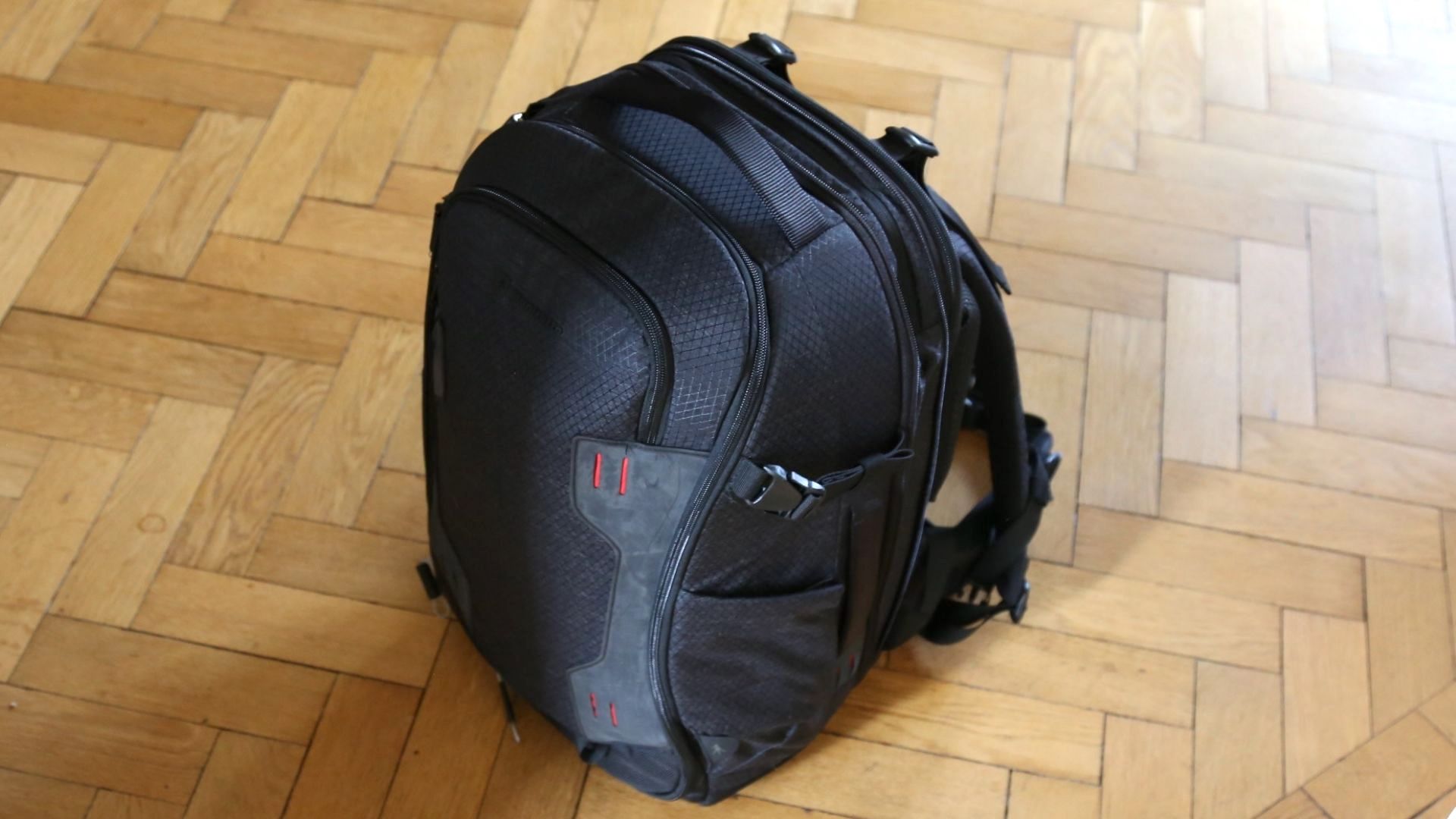
Specifications
Reasons to buy
Reasons to avoid
✅Generous Storage Capacity: The Pro Light Flexloader L offers a spacious interior, making it ideal for photographers needing to carry a large amount of gear.
✅Comfortable for Long Hauls: Despite its size and weight, the bag's padded straps provide comfort, making it suitable for long walks or hikes with heavy gear loads.
❌Expensive: Given its size and feature set, this backpack comes at a higher price point, which might not be justified unless you consistently use its full storage potential.
❌Overkill for Casual Use: The robust build and extensive features may be more than what’s needed for photographers with more modest gear-carrying requirements, making it less practical for everyday or casual use.
A big, front-loading camera backpack, the Manfrotto Pro Light Flexloader L is probably not one for anyone who isn't going to be using the majority of its generous interior capacity, given its price and its size. But if you need a big old backpack that's going to give you peace of mind that your gear is well-protected – step right up, here it is.
The shock-absorbing dividers inside the Pro Light Flexloader mean your gear is protected from impacts, and there's a decent degree of customizability – you can even whip all the internal stuff out and just use it as a regular backpack if you want - we were then able to squash it down to a size where it might be more likely to fit into airline carry-on dimensions.
This is a big and heavy bag, but its padded straps make it comfortable to wear, meaning it's a good choice for long walks and hikes where you need to carry a lot of gear.
Read our full Manfrotto Pro Light Flexloader L review for more details
Best ultra light camera backpack
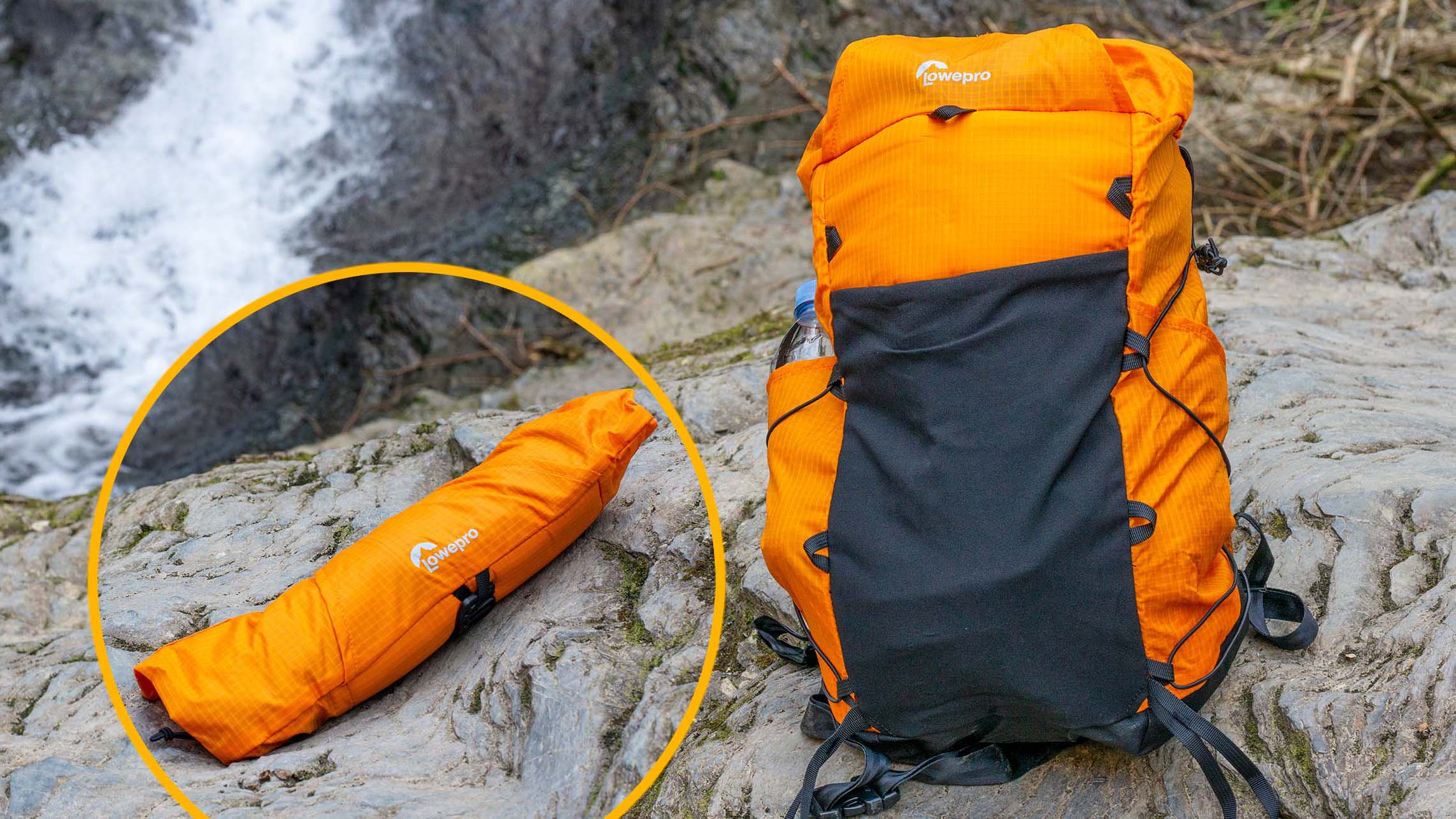
Specifications
Reasons to buy
Reasons to avoid
✅Ultra-Lightweight: Weighing just 400g, this is Lowepro’s lightest backpack, making it an excellent choice for short photo excursions without adding significant weight to your load.
✅Side Pockets and Pull Cords: Additional features like side pockets and pull cords add practicality, making it easier to organize and secure smaller items.
❌Limited Capacity: Due to its compact and lightweight design, the RunAbout Pack-Away may not have enough space for those needing to carry more substantial gear on their excursions.
❌Basic Features: While functional, the RunAbout lacks advanced features and padding that more specialized camera backpacks might offer, making it less suitable for carrying expensive gear over rough terrain.
The RunAbout Pack-Away Daypack is an ideal choice for photographers and hikers who need a lightweight, compact solution for short excursions away from base camp. Weighing in at just 400 grams, it’s Lowepro’s lightest backpack, making it incredibly easy to carry without adding unnecessary bulk.
When not in use, the daypack conveniently rolls up into a compact 11x3.9-inch cylinder, allowing you to slip it inside or attach it to your main rucksack without significantly impacting your overall load.
This daypack offers a practical alternative to hauling around a large, cumbersome 70L rucksack when you only need to carry the essentials. Its design features a drawstring top for quick access and zipped back openings for added security. The side pockets provide additional storage for small items like water bottles or snacks, and the pull cords make it easy to compress or adjust the pack as needed.
Despite its minimalist design, the RunAbout doesn’t skimp on functionality. Its super-lightweight build is perfect for those who prioritize mobility and convenience, whether you’re capturing photos on a mountain trail or taking a brief hike from camp.
The pack’s easy-to-stow nature makes it a go-to choice for anyone who needs a reliable, space-saving option for short trips. If you’re in search of a daypack that combines portability with practical storage, this little bag is a fantastic pick.
Read our full Lowepro RunAbout BP 18L backpack review for more details
Best backpack for outdoor protection

Specifications
Reasons to buy
Reasons to avoid
✅Customizable Fit: The ActivLift system allows you to adjust the shoulder straps relative to the backpack to suit your torso size, enhancing comfort on long hikes.
✅Hydration Ready: Features like a large zippered pocket with a passthrough and an attached loop for a 2L hydration reservoir, plus a stretch pocket for a water bottle, make it practical for long, arduous hikes.
❌Large and Bulky: Due to its size, it might be too large or bulky for casual outings or for those who don’t need to carry extensive gear.
❌Complex Organization: The large interior with many padded dividers may require careful organization and adjustment to efficiently store and access your equipment.
The Pro Trekker 650 AW II is the largest backpack in Lowepro’s Pro Trekker range, with a generous 43L liter capacity. When fully crammed with a range of DSLR and mobile photography accessories the backpack weighed in at a hefty 10 Kg, though thanks to the sturdy shoulder straps and the padded rear it was very comfortable to carry even over rugged terrain. The additional hip straps provide an effective way to spread the weight. For additional comfort, you can adjust the height of the shoulder straps relative to the backpack using the ActivLift system. This helps you customize the design of the backpack to suit your torso size.
As an outdoor backpack, the Pro Trekker 650 AW II is constructed from resistant ripstop material reinforced with carbonate and TPU coatings, so you can place it on rough surfaces without fear of damage. The spacious interior of the Pro Trekker 650 AW II is crammed full of thick padded dividers that will hold your valuable and fragile lenses securely in place. Thanks to a hook and loop system you can re-organize the layout of the interior dividers to suit a wide range of kit, from large camera and lens combinations to drones and camcorders. To keep your gear even safer a supplied waterproof weather wrap will enclose the entire backpack when rain stops play. Both the front and side of the backpack are designed to carry a wide range of tripods, all the way up to a Gitzo Systematic.
The bag has a large zippered pocket with a passthrough and an attached loop for a 2L hydration reservoir to keep you hydrated on an arduous hike. There's also a big stretch pocket and compression straps to secure a water bottle. The bags in the Pro Trekker range are branded with a green line to indicate Lowepro’s commitment to sustainability (such as using 87% recycled material), so you can enjoy using it in the great outdoors guilt-free.
Read our full Lowepro Pro Trekker BP 650 AW II review
How to choose the best camera backpack
As you can see from this buying guide there is a wide range of backpack sizes available, so you need to decide if you need a capacious 35L backpack like the Shimoda Explore V2, or a smaller airline cabin-compatible backpack like the 21L McKinnon Cube Pack. Many of our recommended backpacks require the purchase of additional camera storage units (or ‘cores’ or ‘boxes’ depending on the manufacturer) that you can pack with camera gear and insert into the backpack.
Although these modular units add to the expense of a backpack they can be very convenient as you can insert different units into your backpack depending on the type of shoot that you’re planning. For example, one unit might be packed with your DSLR, lenses, and external flash gun, while another box might be filled with your drone kit and its accessories. You can insert the relevant pre-packed storage unit quickly and easily.
You may not need to buy an additional internal storage unit as some kit (such as camera cages and gimbals) come with their own specially designed carry cases that can slot straight into a larger backpack. If you don’t want to pay extra for storage units then consider backpacks such as the Tenba DNA 16 DSLR and the STM Dux which ship with DSLR hook and loop dividers.
How does a waterproof zip work
Many of the backpacks in this guide (such as the Shimoda Explore V2 and the McKinnon Cube Pack) have a water-resistant seal that overlaps the zips that give access to the backpack’s interior. As the zip closes the top of the seal connects with the bottom (like closed lips), ensuring that no water will enter the bag’s interior. Many bags also ship with an additional water-resistant weather wrap that fits over the entire backpack for extra protection (such as the Lowepro PhotoSport X and the Ten DNA 16).
What is a roll top?
A rolltop (such as the one featured on the Tenba DNA 16 DSLR backpack) is a water-resistant flap of material that is folded inside the top of a backpack. If you need to extend the bag’s interior space then you can un-roll the material and fasten it with a clip. When the material is rolled in on itself it forms multiple water-resistant layers, so there is very little chance of any water getting into the backpack.
What's the ideal interior layout for my gear?
A common feature for camera backpacks is to have interiors that are not only padded but also customizable, with Velcro dividers that can be rearranged and reoriented to fit snugly around your equipment. Try laying out all of your photography kit on a table, in the rough configuration they will go into your backpack. Leave a little space for internal dividers, then measure the size of the overall width, depth, and height.
What's the most convenient way to get into the camera backpack?
With traditional camera backpacks, you have to take the bag off and lay it down to access your camera and other gear – not ideal if the ground is wet or muddy. A couple of the backpacks in our list have rear access, so you can lay the bag down on its front – some backpacks can also be found with side access, so you don't even need to put the bag down to get at your camera.
How we test the best camera backpacks
When compiling this guide, we've been careful to choose a spread of bag manufacturers to give you more choice and variety of backpack styles and prices. There are two Gomatic (or Nomatic in the States) backpacks in this guide but as one is designed to be stored inside we felt we should include them both.
I’ve had hands-on experience with all of the backpacks featured in this buying guide and I’ve also written all of the full reviews that this guide’s mini-reviews link to, with the exception of the full review of the Shimoda Explore V2 35L from Hannah Rooke, who gives a female perspective on using this bulky camera backpack. I still took the Shimoda Explore V2 35L on location to get hands-on experience.
I used each backpack in this guide to transport video and photographic gear to various shoots. I filmed a video review of every backpack on location (from the South Downs in the UK to Krakow in Poland) and transported my gear in the specific backpack that was featured in each review, so I have hands-on experience using the camera backpacks for real shoots in a variety of rural and urban locations.
Find out more about how we test and review on Digital Camera World
Get the Digital Camera World Newsletter
The best camera deals, reviews, product advice, and unmissable photography news, direct to your inbox!
George has been freelancing as a photo fixing and creative tutorial writer since 2002, working for award winning titles such as Digital Camera, PhotoPlus, N-Photo and Practical Photoshop. He's expert in communicating the ins and outs of Photoshop and Lightroom, as well as producing video production tutorials on Final Cut Pro and iMovie for magazines such as iCreate and Mac Format. He also produces regular and exclusive Photoshop CC tutorials for his YouTube channel.

